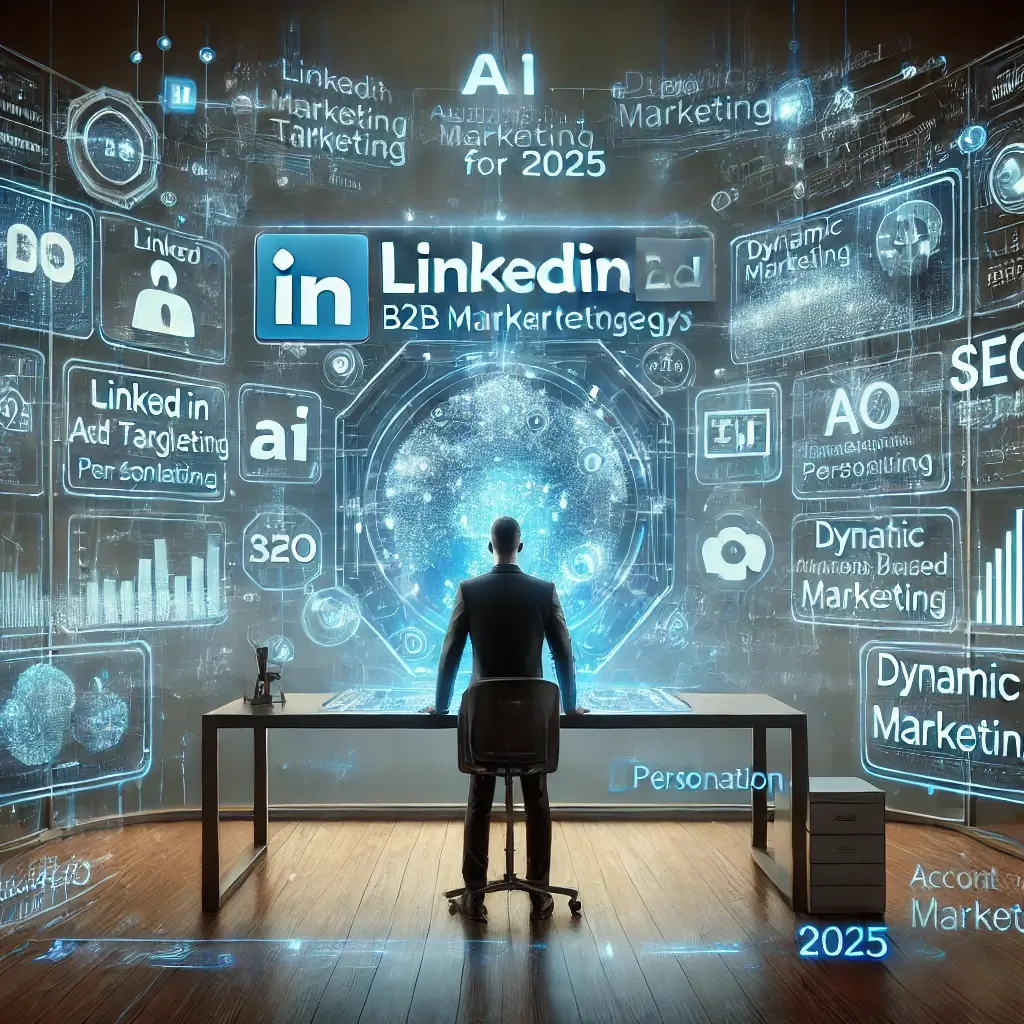The Evolving B2B Marketing Landscape
As we progress into 2025, the B2B marketing landscape grows increasingly competitive, with LinkedIn firmly established as the leading platform for connecting with professionals and decision-makers. While its advanced tools and AI-driven capabilities have transformed digital advertising, marketers face new challenges: rising competition, ad fatigue, and increasing demands for personalization. The effectiveness of LinkedIn ads hinges not only on leveraging its robust tools but also on navigating these hurdles effectively.
LinkedIn’s Unmatched Lead Generation Potential
Despite these obstacles, LinkedIn’s ability to generate high-quality leads and engage decision-makers remains unmatched. Studies reveal that 80% of B2B leads are sourced through LinkedIn, a testament to its unparalleled targeting and advertising features. This article explores the primary challenges facing B2B marketers on LinkedIn in 2025 and provides actionable strategies to overcome them while aligning with emerging trends in SEO and analytics.
Key Challenges and Strategies for Success
The number of advertisers on LinkedIn has surged, leading to increased competition for premium ad placements. This uptick not only drives up costs but also makes it harder to capture audience attention.
Solutions for Rising Competition
Enhanced Content Personalization: Leveraging AI to craft hyper-relevant content for niche segments can differentiate your campaigns (Smith, 2024).
Strategic Budget Allocation: Focus on high-value audience segments using account-based marketing (ABM) and advanced targeting tools.
Creative Ad Formats: Experiment with interactive formats like carousel ads and video, which boast higher engagement rates than static ads.
Addressing Ad Fatigue
With more advertisers vying for the same audience, users are exposed to a higher volume of ads, leading to declining engagement rates.
Combating Ad Fatigue Solutions
Content Freshness: Regularly updating ad creatives and rotating themes keeps campaigns engaging.
Sequential Messaging: Deliver ads in phases, guiding audiences through a structured journey that builds interest over time.
Dynamic Personalization: Use tools like LinkedIn’s dynamic ads to tailor messaging based on individual user profiles (Johnson et al., 2024).
Meeting the Demand for Personalization
Modern B2B buyers expect advertising that speaks directly to their needs and pain points. Generic messaging no longer suffices in a competitive digital ecosystem.
Personalization Strategies
AI-Powered Insights: Utilize LinkedIn’s AI to analyze engagement patterns and refine content personalization.
Thought Leadership Content: Position your brand as an industry authority by sharing in-depth research, case studies, and solutions tailored to audience challenges.
Retargeting Strategies: Re-engage website visitors and ad interactors with personalized follow-up campaigns.
Aligning with Emerging Trends
As search algorithms increasingly prioritize intent and user experience, LinkedIn ads must align with SEO strategies to maximize impact:
SEO and LinkedIn Advertising Integration
Content Relevance: Ensure ad copy and landing pages align with user search intent and industry-specific keywords.
Multimedia Integration: Incorporate high-performing content formats like videos and infographics, which improve dwell time and engagement.
Mobile Optimization: With a growing number of professionals using mobile devices, mobile-friendly ad formats are non-negotiable.
Privacy-First Advertising Approach
Evolving privacy regulations challenge traditional tracking and targeting methods. LinkedIn’s compliance with privacy laws offers a competitive edge, but marketers must adapt:
Privacy-Conscious Marketing Tactics
First-Party Data Utilization: Leverage your CRM and LinkedIn’s native tools to target audiences without relying on third-party cookies.
Consent-Driven Marketing: Ensure transparent opt-in processes for campaigns.
Attribution Models: Adopt multi-touch attribution to understand customer journeys without invasive tracking.
Case Study: Tackling LinkedIn Ad Challenges
A mid-sized consulting firm struggled with rising ad costs and declining engagement rates as competition intensified. Generic messaging failed to capture attention, and ad fatigue further reduced click-through rates.
Strategic Approach to Overcome Challenges
Audience Refinement: Leveraged LinkedIn’s ABM tools to target decision-makers in niche sectors.
Creative Diversification: Introduced video testimonials and carousel ads to refresh campaign visuals.
Sequential Campaigns: Designed a multi-phase strategy combining awareness, consideration, and conversion-focused ads.
Impressive Results
40% improvement in engagement rates
25% reduction in cost per lead
3x growth in pipeline opportunities
Conclusion and Future Outlook
Navigating LinkedIn’s challenges in 2025 requires a proactive, adaptive approach. Rising competition, ad fatigue, and demands for personalization are significant obstacles, but they also present opportunities for marketers willing to innovate and evolve. By embracing advanced tools, aligning with SEO trends, and crafting campaigns that prioritize audience relevance, businesses can not only overcome these hurdles but thrive in LinkedIn’s dynamic ecosystem.
Final Thoughts on LinkedIn Marketing Success
With a focus on creativity, strategy, and data-driven insights, LinkedIn remains a cornerstone for B2B success. By tackling challenges head-on and leveraging the platform’s unique capabilities, marketers can build campaigns that drive lasting impact and measurable growth.
References
Smith, J. (2024). “The Power of Personalization in Modern Marketing.” Digital Strategy Review.
Johnson, A., et al. (2024). “Dynamic Ads and Engagement Trends.” Marketing Analytics Quarterly.
“Privacy-First Advertising: The New Standard.” (2025). B2B Marketing Insights.
“Case Study Repository.” (2025). Marketing Success Stories.
